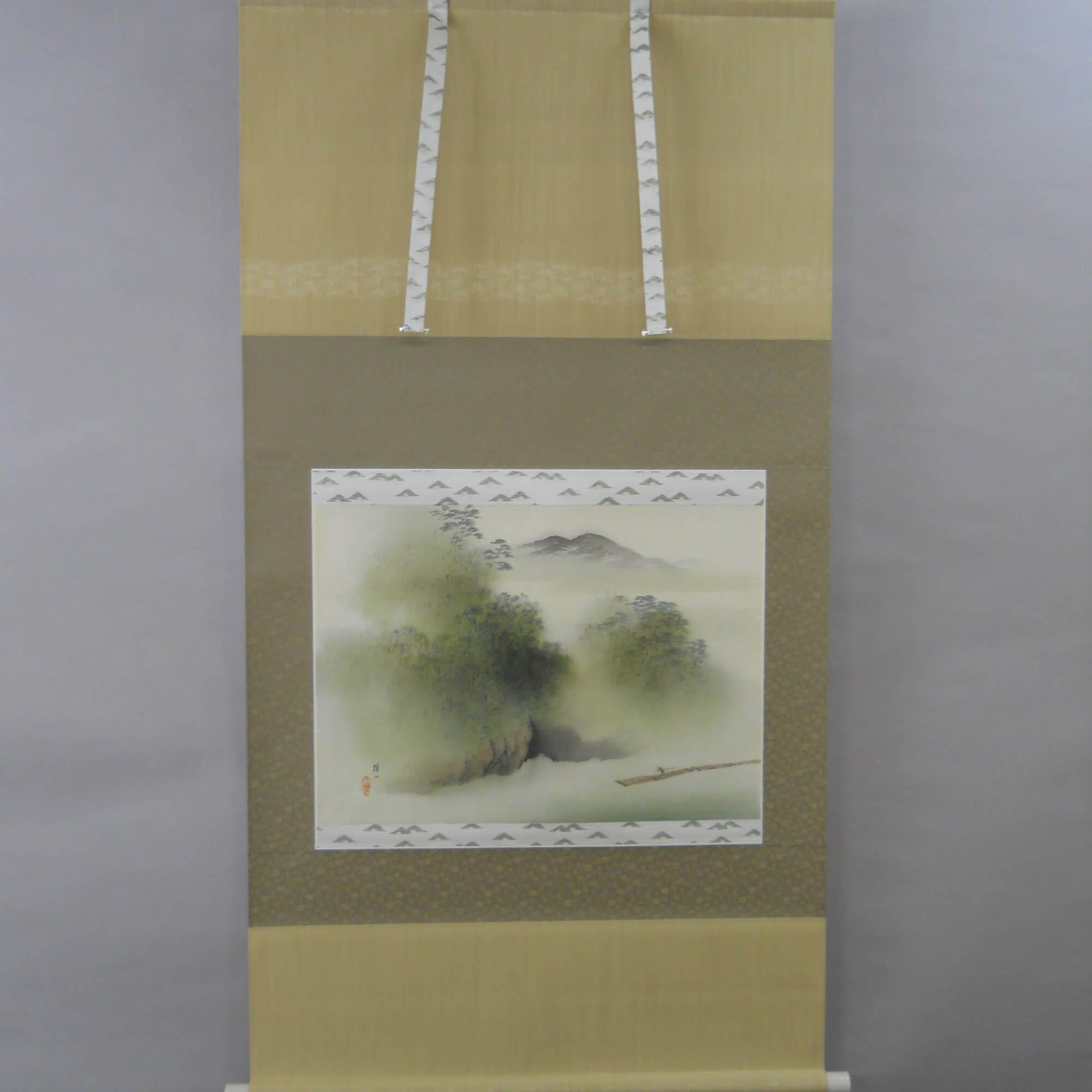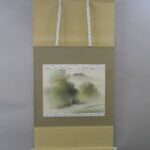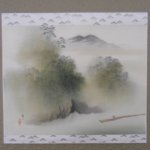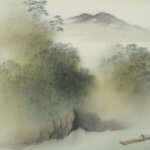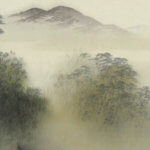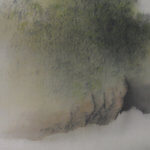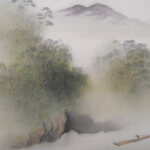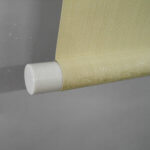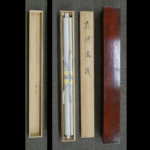Products Lineup
News / Blog
Other Menus
Kakejiku Hanging Scroll: Landscape Painting: Arashiyama Gorge and Raft / Hirai Baisen - Rankyō Rubatsu
- Product ID
- 0218
- Name
- Hirai Baisen
- Profile
Hirai Baisen (平井楳仙, 1889-1969) was a Japanese-style painter. He was born in Kyoto pref. He studied painting techniques under Takeuchi Seihō. His specialty was figure paintings, flowers & birds paintings, and landscape paintings.
- Size
- 722mm x 1265mm
- Roller End Material
- Ceramic
- Material of the Work
- Silk
- Stock Condition
- Sold out
- Description
Hirai Baisen, who had been good at painting since his childhood, decided to pursue a career in painting to graduate from the Kyōto Municipal School of Arts and Crafts in 1906 at the age of 17. Studying under Takeuchi Seihō, his work was selected for the first Bunten exhibition as early as 1908. He then continued to win prizes to become a leading figure of the Bunten exhibition. In 1910, he formed the Tōka-kai with Irie Hakō, Sakakibara Shihō, and Matsumiya Hōnen to play a central role in its formation.
Born in Kyōto, Baisen has created many works that depict beautiful sceneries of Kyōto changing from season to season. The Hozugawa Gorge depicted in this work is a scenic spot known for river rafting and sightseeing trolley trains even today as one of the subjects most often depicted by Baisen. The contrast between the figure on the rafts and the magnificent natural beauty of the valley is very impressive to possibly sense the strangeness of Baisen’s composition. The cloth with mountain patterns of the hanging scroll matches the theme of this work, which makes it even more interesting.

